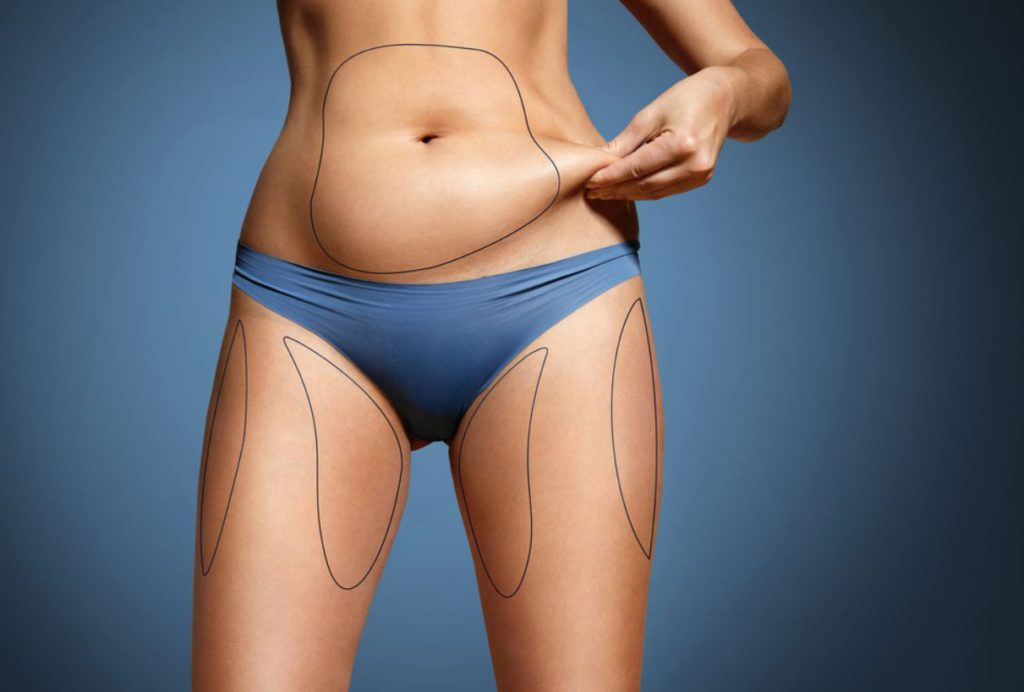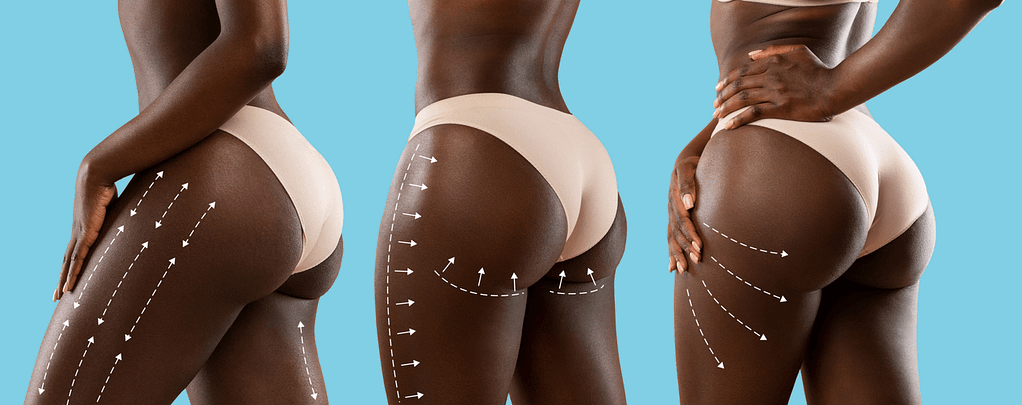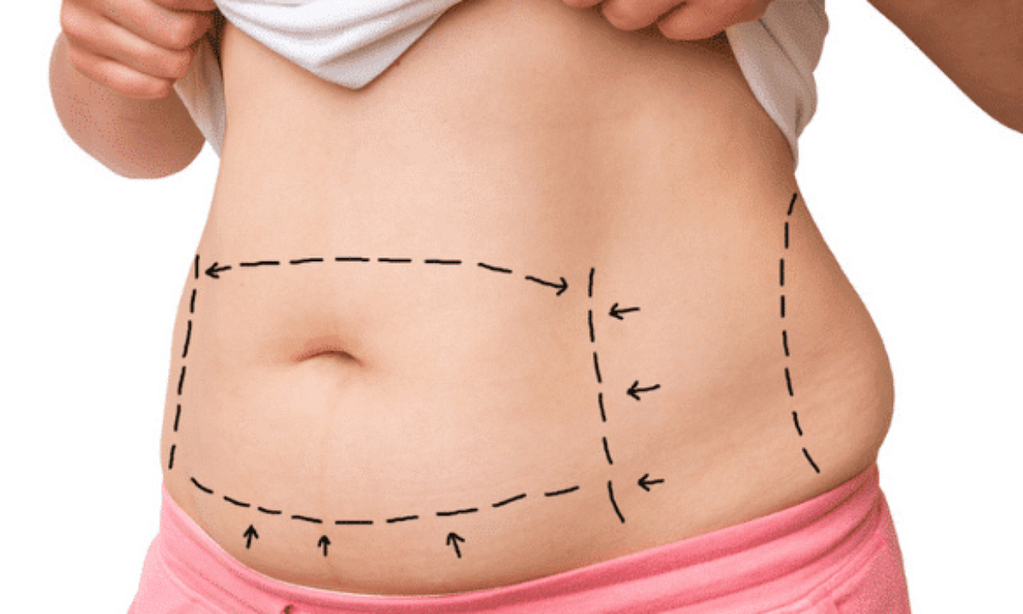360-degree liposuction, or Lipo 360, is a cosmetic procedure that addresses the entire midsection, including the front, sides, and back, for a comprehensive contouring solution. This method of liposuction differs from traditional liposuction by treating multiple areas of the body in one setting, providing a more harmonious result. The cost of Lipo 360 varies based on various factors such as the extent of fat removal, location, and surgeon’s expertise. On average, Lipo 360 procedures cost between $2,000 and $7,000, while the average cost of traditional liposuction is $3,637, according to the American Society of Plastic Surgeons.

Suitable candidates for Lipo 360 are usually within 30% of their ideal weight and have stubborn fat deposits around their midsection that do not respond well to diet and exercise. A consultation with an experienced plastic surgeon is necessary to determine eligibility and discuss expectations. It is important to note that Lipo 360 should not be considered a weight loss solution but rather, a body contouring procedure designed to improve the overall appearance of the treated areas.
Key Takeaways
- 360-degree liposuction targets the entire midsection in one procedure, offering comprehensive contouring.
- Suitable candidates are generally within 30% of their ideal weight and struggle with stubborn midsection fat.
- The average cost for Lipo 360 ranges from $2,000 to $7,000, dependent on various factors such as location and surgeon’s expertise.
Understanding 360 Lipo
360 Lipo, also known as Lipo 360, is a comprehensive liposuction procedure that aims to contour the midsection of your body. The primary goal of this plastic surgery procedure is to remove stubborn fat deposits from various regions around your torso, including stomach, waist, upper back, lower back, and sometimes underarms.
Unlike traditional liposuction, 360 Lipo leverages ultrasound-assisted lipo technology to improve the precision and efficiency of fat removal. This advanced lipoplasty method helps to reduce swelling and bruising, shorten recovery time, and achieve smoother results.
The cost of a 360 Lipo procedure can vary depending on factors such as geographical location, the surgeon’s expertise, and the extent of fat removal. Prices typically range from $2,000 to $7,000, with an average cost around $3,637 according to the American Society of Plastic Surgeons.
Ideal candidates for Lipo 360 are those who are within 30% of their desired weight and struggle to achieve their desired body shape through diet and exercise alone. It’s essential to keep in mind that Lipo 360 is not a weight loss solution or an alternative to a healthy lifestyle. In fact, post-operative care plays a crucial role in maintaining the results, including a balanced diet and regular physical activity.
In conclusion, 360 Lipo is a popular plastic surgery procedure aimed at contouring the entire midsection. By employing the ultrasound-assisted liposuction method, patients can achieve a smoother, more defined appearance with less downtime associated with traditional liposuction. As with any surgical procedure, it’s essential to consult with a qualified and experienced plastic surgeon to ensure it’s the right choice for you and understand the potential risks and outcomes.

Criteria for a Lipo Candidate
Lipo 360 is a popular cosmetic procedure that aims to remove unwanted fat from multiple areas of the midsection, providing patients with a more contoured appearance. However, not everyone is an ideal candidate for this procedure. Several factors contribute to determining whether an individual is likely to achieve successful results from Lipo 360.
An ideal candidate for liposuction, including Lipo 360, should be an adult who is within 30% of their ideal weight and has firm, elastic skin with good muscle tone. This is important because individuals with a stable weight and healthy skin are more likely to achieve a smooth and even result following the procedure.
In addition to weight considerations, it is crucial for Lipo 360 candidates to be in good overall health. Those without life-threatening illnesses or medical conditions that could impair healing are more suitable candidates. Nonsmokers and non-vapers are also favored. Individuals who smoke or vape should be willing to quit before undergoing the procedure, as smoking can negatively affect the healing process.
Moreover, candidates should have realistic expectations for the results of Lipo 360. While the procedure can provide significant improvements in body contouring, it is not a weight loss solution or a replacement for a healthy lifestyle. Prospective candidates should have specific goals for body contouring and maintain a positive outlook throughout the process.
Age can also be a factor in determining candidacy, but there is no specific age limit for Lipo 360. Instead, overall health and skin elasticity plays a more significant role in determining if someone is a good candidate. However, candidates should understand that the older they are, the less elastic their skin may be, which can impact the final results.
In summary, the key factors for determining Lipo 360 candidacy include being within 30% of one’s ideal weight, having firm and elastic skin, being in good health, being a nonsmoker, and having realistic expectations. While age may not be an absolute criterion, it is essential to consider how it could impact skin elasticity and the overall outcome of the procedure.

Areas of the Body for 360 Lipo
360 Lipo, a comprehensive liposuction procedure, targets multiple areas of the body, resulting in a more contoured and sculpted appearance. This advanced treatment uses specialized techniques to remove unwanted fat from various regions.
One of the primary areas targeted by 360 Lipo is the midsection, which includes the abdomen, flanks, hips, waist, and lower back. By addressing these regions simultaneously, the procedure can effectively improve body proportion and create a slimmer waistline.
In addition to the midsection, 360 Lipo can also address the upper arms, thighs, and butt. Removing excess fat from the upper arms can create a more toned appearance, while the thighs and butt can benefit from a smoother and more defined shape. The treatment also enhances the waist-to-hip ratio, giving the body a more attractive silhouette.
Another region often treated during 360 Lipo is the neck and area under the chin. Excess fat in these areas can cause a double chin or sagging skin, making individuals appear older than they are. By removing unwanted fat in these areas, 360 Lipo can restore a more youthful and defined jawline.
Some clinics may also offer liposuction techniques for the back and breasts. The back can accumulate stubborn fat deposits, particularly in the upper back or “bra roll” area. As for the breasts, removing excess adipose tissue can result in a more proportional chest size and lifted appearance.
In summary, 360 Lipo is a versatile treatment that addresses various parts of the body, including the midsection, upper arms, thighs, butt, neck, back, and breasts. By targeting these areas simultaneously, the procedure delivers a more harmonious and improved body contour.

The Procedure of 360 Liposuction
360 liposuction is a comprehensive body contouring procedure that targets fat cells in the entire midsection, including the front, sides, and back. The use of anesthesia ensures patient comfort during the surgery. The main goal of this procedure is to create a harmonious and natural-looking contour by removing excess fat from the targeted areas.
The procedure begins with the administration of anesthesia, either local or general, depending on the extent of fat removal and the patient’s preference. Once the patient is comfortable, the surgeon makes small incisions in the skin to access the underlying fat cells. A thin tube called a cannula is then inserted through these incisions to break up and remove the excess fat.
There are different techniques that can be used during 360 liposuction, such as VASER liposuction and ultrasound-assisted liposuction. In VASER liposuction, ultrasonic technology is used to liquefy the fat cells before their removal, making the procedure more efficient and precise. Ultrasound-assisted lipo, on the other hand, uses ultrasound waves to break up the fat cells while leaving surrounding tissues unharmed.
Once the desired amount of fat is removed, the incisions are closed, and a compression garment is applied to the treated areas. This garment helps to minimize swelling and provide support during the healing process. 360 liposuction is generally performed as an outpatient procedure, allowing patients to return home the same day as their surgery.
It is important to note that while 360 liposuction is effective at removing fat cells, it is not a weight loss solution and should not be used as a substitute for diet and exercise. Patients should maintain a healthy lifestyle to ensure long-lasting results. If further contouring is desired following the initial procedure, a revision may be necessary after the body has healed from the initial surgery.
In conclusion, 360 liposuction is a safe and effective procedure for achieving a more contoured and harmonious appearance in the midsection. By utilizing advanced techniques like VASER liposuction and ultrasound-assisted lipo, surgeons can provide precise, targeted fat removal and deliver natural-looking results for their patients.

Benefits and Risks of 360 Lipo
360 Lipo is a comprehensive liposuction procedure that targets areas such as the abdomen, flanks, and lower back in one session. This technique offers several benefits, but there are also potential risks and complications to be aware of when considering this procedure.
One of the main benefits of 360 Lipo is the improved body contouring it provides. By removing excess fat, it creates a smoother, more sculpted, and toned appearance. This comprehensive approach also enables a more balanced and symmetrical result, as multiple areas are treated simultaneously.
However, some risks and complications can occur with 360 Lipo, such as swelling and bruising. These are common side effects after any liposuction procedure and tend to subside over time. Additionally, there is a risk of contour irregularities, which may appear as lumps or uneven areas beneath the skin. These irregularities can sometimes be corrected by additional procedures or treatments.
Asymmetry is another potential risk associated with 360 Lipo. While the procedure aims to provide a symmetrical result, there are instances in which the results may not be perfectly balanced. Asymmetry can often be addressed through revision surgeries or nonsurgical treatments.
Seroma, or fluid buildup beneath the skin, is another possible complication associated with 360 Lipo. Seromas typically need to be drained, either through a needle or a small incision. It is essential to follow the surgeon’s aftercare instructions closely to reduce the risk of seroma and other complications.
In summary, 360 Lipo offers benefits such as improved body contouring and a more balanced, sculpted appearance. However, it also carries potential risks, including swelling, bruising, contour irregularities, asymmetry, and seroma formation. It is crucial to consult with a qualified and experienced plastic surgeon to determine if 360 Lipo is a suitable option and understand the potential benefits and risks involved.

Recovery after 360 Lipo
360-degree liposuction is a comprehensive procedure that targets multiple areas at once for an overall slimmer look. The recovery process after 360 lipo isn’t significantly different from traditional liposuction, but there are a few key aspects to be aware of during this time.
After the surgery, the patient is typically required to wear a compression garment for a specific period, often for several weeks. Compression garments are essential to help minimize swelling, provide support, and assist in the reshaping of treated areas. They should be worn as instructed by the surgeon to ensure optimal results.
Patients should expect some downtime following the procedure. The length of downtime will vary for each individual, with factors such as the extent of the surgery and their general health playing a role. It can range from a few days to a couple of weeks, depending on the patient’s unique circumstances. During this period, it’s crucial to avoid strenuous activities and follow the postoperative care instructions provided by the surgeon.
Swelling is a common side effect of liposuction. Swelling can last for eight to ten weeks, and may cause some discomfort, tightness, and numbness in the treated area. To help minimize swelling, patients can follow their surgeon’s recommendations on activity restrictions, elevating the treated area, and using ice packs as needed.
Recovery time can vary based on several factors, including pain tolerance, overall health, and the patient’s ability to follow postoperative care instructions. It’s essential to closely follow the surgeon’s guidance during the healing process which may cover aspects such as medications, wound care, and follow-up appointments.
In conclusion, recovery after 360 lipo involves the use of compression garments, a period of downtime, and managing swelling. By adhering to their surgeon’s postoperative care instructions, patients can ensure their healing process runs smoothly and enhances the overall results of the procedure.

Estimating the Cost of 360 Lipo
The cost of a 360 Lipo procedure can vary significantly depending on factors such as the location, the extent of fat removal, and the surgeon’s expertise. On average, the cost range for a Lipo 360 procedure is between $2,000 and $7,000. According to the American Society of Plastic Surgeons, the average cost of liposuction is $3,637.
When considering the cost, it’s essential to remember that most clinics charge per area. For instance, a VASER liposuction procedure starts at $2,400 per area, with 360 VASER lipo costing around $9,600. Good candidates for the procedure are typically those within 30% of their ideal weight.
Geographical location can also play a role in the cost of 360 Lipo. Prices in highly-populated urban areas like California or Washington might be higher than in smaller cities or towns. One example of the cost variation can be found in Fresno, California, where the cost likely differs from the national average.
When budgeting for a 360 Lipo procedure, it is crucial to take additional expenses into account. These may include:
- Anesthesia fees
- Facility fees
- Medical tests
- Post-surgery garments
- Surgeon’s fees
For those considering financing options to help cover the cost of the procedure, CareCredit is a popular choice to help manage the expenses. In any case, it is vital to discuss the full cost and payment options with your chosen surgeon during the consultation process.
Ultimately, the cost of 360 Lipo can be influenced by numerous factors, and it’s essential to thoroughly research your options, review surgeon expertise and facility reputation, and establish a clear understanding of the costs involved to ensure a successful outcome.

Choosing a Plastic Surgeon
When considering 360 liposuction, it is essential to choose a qualified and experienced plastic surgeon to perform the procedure. One of the key factors in finding the right surgeon is to ensure they are a board-certified plastic surgeon. Board certification guarantees that the surgeon has met rigorous training and educational standards, ensuring a higher level of expertise and safety.
In addition to board certification, it is crucial to research the plastic surgeon’s experience with 360 liposuction. This can be done by viewing their portfolio of before and after photos, reading patient reviews, and seeking recommendations from friends or family who have undergone the procedure. By doing this research, you can gauge the surgeon’s expertise and determine if their style and approach align with your goals.
When choosing a plastic surgeon, it is also important to consider the surgeon’s communication skills and bedside manner. An excellent plastic surgeon should be able to explain the procedure, risks, and expected outcomes clearly and answer any questions you may have. They should make you feel comfortable and supported throughout the entire process. Scheduling a consultation with multiple plastic surgeons can help you determine which one is the best fit for your needs.
Lastly, pay attention to the surgical facility where the procedure will be performed. Ensure that it is accredited, well-maintained, and staffed with experienced professionals. An accredited facility offers a higher level of patient safety by adhering to strict standards and guidelines.
In summary, when choosing a plastic surgeon for 360 liposuction, prioritize factors such as board certification, experience in performing the procedure, communication skills, and the quality of the surgical facility. Taking these steps will help ensure a successful outcome and a positive experience throughout your 360 liposuction journey.

Comparing 360 Lipo with Other Procedures
360 Lipo, or 360-degree liposuction, is a popular body contouring procedure that targets multiple areas such as the abdomen, flanks, and lower back, providing a sculpted and toned appearance. It’s important to understand how this procedure compares to other weight loss and body-shaping methods such as traditional liposuction, power-assisted liposuction, liposculpture, tummy tuck, and treatments for gynecomastia.
Traditional liposuction is a procedure that removes fat from specific areas of the body using suction. While both traditional liposuction and 360 Lipo share the aim of fat reduction, the latter covers a broader area, targeting the midsection and creating a smooth, streamlined silhouette.
Power-assisted liposuction (PAL) is a variant of traditional liposuction that employs a powered cannula to remove fat more efficiently. Although PAL might offer less tissue damage and quicker recovery, 360 Lipo distinguishes itself by addressing multiple body parts simultaneously.
Liposculpture is a technique that focuses on removing and reshaping the fat deposits to improve body contours. While both liposculpture and 360 Lipo work towards creating a defined figure, 360 Lipo offers the advantage of treating the entire midsection in one procedure.
A tummy tuck, or abdominoplasty, is a surgical procedure that removes excess skin and tightens the abdominal muscles. Unlike 360 Lipo which primarily focuses on fat removal, a tummy tuck is better suited for individuals dealing with sagging or stretched skin following significant weight loss or pregnancy.
Gynecomastia is a condition in which men develop enlarged breast tissue. Although liposuction might be utilized as part of gynecomastia treatment, it is not the primary focus of 360 Lipo, which specifically targets the midsection for comprehensive contouring.
In summary, 360 Lipo provides an extensive approach to body contouring by addressing multiple areas in a single procedure. While traditional liposuction, power-assisted liposuction, liposculpture, and gynecomastia treatments also target fat reduction and shaping, they might not cover the same scope as 360 Lipo. Meanwhile, a tummy tuck primarily addresses excess skin and abdominal muscle tightening, offering a distinct treatment option for individuals with different concerns.

Q&A With Dr. Sheba
Jason: Welcome, Dr. Sheba. Let’s start with the basics of Lipo 360. What exactly does it entail?
Dr. Sheba: Lipo 360, or circumferential liposuction, is a comprehensive body contouring procedure. It targets excess fat deposits in distinct areas like the upper and lower abdomen, ensuring a slimmer appearance. Unlike traditional liposuction, which focuses on a single area, Lipo 360 treats the entire torso.
Jason: Interesting. How does this differ from other body contouring procedures?
Dr. Sheba: Lipo 360 is more holistic, focusing on the entire body shape rather than isolated spots. It’s often combined with other procedures, like the popular Brazilian butt lift, for an ideal body shape. It’s crucial for patients to have good skin elasticity for optimal results.
Jason: What about the issue of excess or loose skin?
Dr. Sheba: That’s a valid concern. Lipo 360 can reduce excess fat, but if there’s significant lax skin, additional procedures may be needed. It’s important to assess the body mass index and skin laxity during the initial consultation to determine the best course of action.
Jason: And what should a patient expect in terms of recovery?

Dr. Sheba: Recovery varies. Generally, patients can return to non-strenuous activities within a few weeks. However, it takes time to heal completely. We advise against strenuous exercise until fully recovered.
Jason: Can you touch on the risks and general anesthesia involved?
Dr. Sheba: Like all surgical procedures, Lipo 360 has risks. General anesthesia is typically used, which also carries its own risks. We ensure thorough pre-surgical evaluation to minimize complications.
Jason: How does Lipo 360 help those looking to lose weight?
Dr. Sheba: It’s essential to understand that Lipo 360 isn’t a weight-loss procedure. It’s about contouring and reshaping. We often recommend lifestyle changes to optimize results and maintain them.
Jason: Finally, what’s the price range for Lipo 360, and what outcomes can patients realistically expect?
Dr. Sheba: Prices vary based on the extent of the procedure and other factors like geographical location. Patients can expect a more contoured and proportionate body shape. However, it’s important to have realistic expectations and understand that it’s not a substitute for weight loss or a healthy lifestyle.
Jason: Dr. Sheba, could you elaborate on how Lipo 360 addresses excess skin, particularly in the upper abdomen?
Dr. Sheba: Sure, Jason. In cases where there’s excess skin, especially in the upper abdomen, Lipo 360 can be part of a more comprehensive strategy. It’s important to remember that liposuction procedures, including Lipo 360, primarily address fat removal. If there’s significant skin laxity, we might combine it with other contouring surgeries, like a tummy tuck, to achieve the desired result.
Jason: How does the process of Lipo 360 differ from traditional liposuction?
Dr. Sheba: Traditional liposuction focuses on removing fat from specific body areas using a hollow tube, known as a cannula, and a surgical vacuum. Lipo 360, on the other hand, takes a more holistic approach. It targets multiple areas around the torso in one treatment, providing a more uniform and comprehensive contouring.
Jason: Is there a difference in the consultation process for Lipo 360 compared to standard liposuction?
Dr. Sheba: Absolutely. A personal consultation for Lipo 360 involves a thorough examination of the entire body to understand the patient’s unique body shape and fat distribution. This is crucial for planning a procedure that addresses their specific needs holistically, rather than focusing on just one area.
Jason: Can Lipo 360 be part of a “mommy makeover” or contouring surgery?
Dr. Sheba: Yes, Lipo 360 is often a key component of a mommy makeover, which typically includes various procedures to address changes post-pregnancy. It’s particularly effective in reshaping and contouring the body after the significant changes that occur during pregnancy and childbirth.

Conclusion
In the realm of cosmetic procedures, Lipo 360 has gained popularity for its ability to sculpt a person’s midsection by removing excess fat throughout the abdominal area. Both men and women can benefit from this procedure, but it is crucial to find a reputable and knowledgeable provider to ensure the best possible results.
Lipo 360 patients often share their experience on sites like RealSelf, where they discuss whether the procedure was “worth it“. By doing research and reading about the experiences of others, one can gain valuable insight into the process, recovery time, and satisfaction with the results. This information can help prospective patients make an informed decision about whether Lipo 360 is the right choice for them.
It is important to note that the cost of Lipo 360 can vary significantly depending on factors such as the provider, location, and the extent of the fat removal. To find a more affordable option, consider researching multiple providers, payment plans, and financing options. Some may also want to explore non-surgical alternatives for cost savings or when it’s not possible to undergo surgery.
In summary, Lipo 360 can be a transformative procedure for those seeking a more contoured midsection. However, it is essential to carefully weigh the costs, select a skilled provider, and gather information from various sources to make the best decision. With the right information and a trustworthy practitioner, patients can enjoy the benefits of Lipo 360 and feel more confident in their appearance.

Frequently Asked Questions
What is the average price for Lipo 360 procedure?
The average cost range for a Lipo 360 procedure varies between $2,000 and $7,000, depending on the extent of fat removed from the midsection. According to the American Society of Plastic Surgeons, the average cost of liposuction is $3,637.
Are there regional differences in Lipo 360 costs?
Yes, regional differences can impact Lipo 360 costs. Factors such as geographic location, demand for the procedure, and the experience of the surgeon play a significant role in determining the price. It is essential to research and compare the costs of Lipo 360 in various regions to find the best option for your needs.
Does insurance cover any part of the 360 Lipo cost?
In most cases, insurance providers do not cover cosmetic procedures like Lipo 360 because they are not considered medically necessary. However, certain conditions or exceptions may apply depending on the specific insurance plan and your medical history. It is crucial to consult with your insurance provider before scheduling the procedure to ensure your eligibility for coverage.
Are there any additional fees for Lipo 360 with Brazilian Butt Lift (BBL)?
Yes, combining Lipo 360 with a Brazilian Butt Lift (BBL) usually results in additional fees. The costs associated with both procedures may include facility fees, anesthesia fees, and surgeon fees. Given the complexity of combined procedures, the total cost may be higher than undergoing Lipo 360 alone. It is essential to discuss the cost breakdown with your surgeon during consultation appointments.
How do Lipo 360 prices compare to traditional liposuction?
Lipo 360 prices can be slightly higher than traditional liposuction due to the comprehensive nature of the procedure. As Lipo 360 targets a more extensive range of areas, such as the abdomen, flanks, and lower back, it may be more expensive compared to traditional liposuction targeting a single area. However, the overall cost of Lipo 360 may still fall within the average liposuction cost range.
Are payment plans available for Lipo 360 procedures?
Many plastic surgery centers and clinics offer payment plans and financing options for Lipo 360 procedures. These plans can make the procedure more affordable by allowing patients to pay for the treatment in installments over a set period. It is crucial to inquire about payment plan options during consultation appointments and to review the terms and conditions carefully before agreeing to a specific financing arrangement.
- Why is My Poop Black: Uncovering the Causes and Solutions - December 21, 2023
- Clear Protein Drinks: Optimal Hydration and Muscle Support for Athletes and Fitness Enthusiasts - December 21, 2023
- Does Apple Juice Make You Poop: Uncovering the Digestive Effects - November 29, 2023








